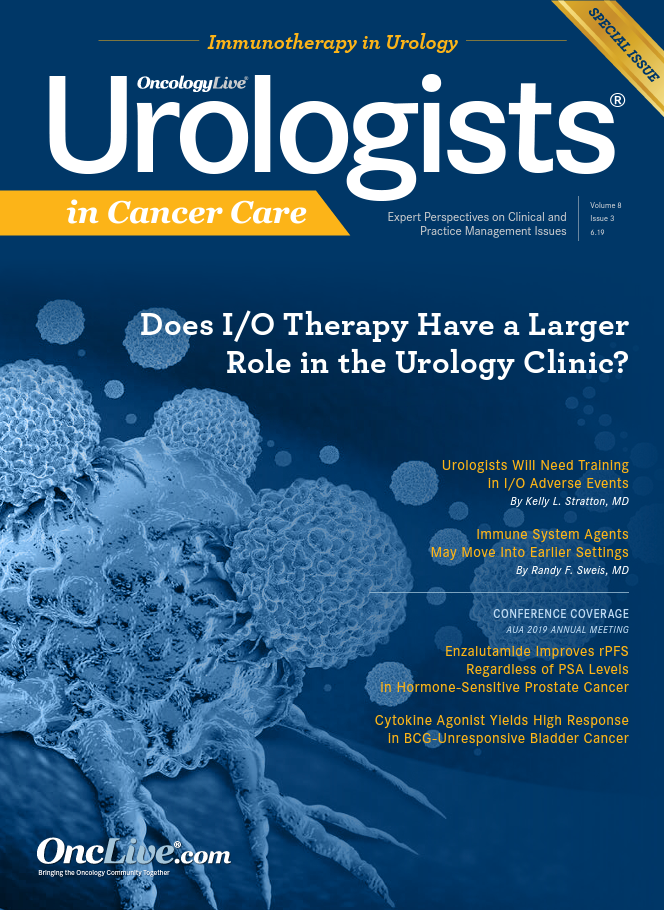Urologists Must Keep Up With Advances and Stay at the Helm
Over the past 5 years, the need for urologists to continue to be the leaders— the quarterbacks—in the diagnosis and management of prostate cancer has often been discussed. History will attest to urologists' success in leading this charge.
Raoul S. Concepcion, MD, FACS
Over the past 5 years, we have often discussed the need for urologists to continue to be the leaders— the quarterbacks—in the diagnosis and management of prostate cancer. History will attest to our success in leading this charge.
The first histological report of prostate cancer was recorded in 1853 and since then the urologist has historically driven the management of the primary tumor. From the first perineal prostatectomy by Hugh Hampton Young, MD, described in 1904, to nerve-sparing technique pioneered by Pat Walsh, MD, in the 1980s, to the now current standard of robotic assistance, we have continued to advance techniques in hopes of better outcomes for our patients. Now, with the understanding that not all prostate cancer requires intervention, we have also incorporated active surveillance for appropriately selected patients.
From a diagnostic standpoint, all of us are keenly aware of the limitations and controversies surrounding prostate-specific antigen (PSA) testing and its value in determining the need for prostate biopsy. We must continue our efforts to educate not only our referring doctors but also the lay public and press on the value of PSA testing when used appropriately. Given the plethora of available tests, urologists must help identify the most appropriate adjuvant testing for determining the need for prostate biopsy, whether it be initial or follow-up.
In the late 1980s, we were early adopters of ultrasound technology in refining and improving our biopsy efforts. For our younger partners, current residents, and fellows, I would suggest Googling the history of William Cooner, MD, a gentleman community urologist in Mobile, Alabama, who was instrumental in developing the current template for ultrasoundguided sextant biopsy, for decades the standard. We are moving yet again to refine this technique; the urology community is ideally suited to determine how multiparametric magnetic resonance imaging will be incorporated into the appropriate biopsy scheme.
The past decade has seen a giant push for urologists to become more involved in the delivery of therapeutic agents in patients with metastatic disease, whether it be hormonesensitive or castration-resistant prostate cancer. Historically in the domain of medical oncology, many interested clinicians, especially in larger community practices, have understood the importance of continuity of care in patients undergoing long-term treatment. Long-term high-quality care and newer approved agents, whether novel oral hormonals, autologous immunotherapies, or radiopharmaceuticals, can be safely delivered by the truly motivated urologist who is interested in learning the nuances of these therapies, especially adverse event profiles and appropriate layering or sequencing.
However, with the anticipated approval over the next couple of years of drugs that are mechanistically different from what we have prescribed in the past, as well as the movement of current agents to earlier settings, the next challenge will be achieving a deeper understanding of the role of molecular testing to aid us in counseling families and determining next lines of therapy as patients progress.
I am hopeful that the increasing body of literature has made many of us aware that lethal prostate cancer has a hereditary component. The recommendations from many societies continue to rapidly evolve, but all are moving in the direction of testing appropriately selected patients who have been identified as high risk, based on detailed family history and genetic makeup. No longer does it suffice to ask for family history of prostate cancer and use race as a determinant for who is at high risk.
Thus, once again we will be challenged, as quarterbacks for the management of prostate cancer, to determine the best way to incorporate genetic testing into the community practice. And it will be a significant challenge, as there are many obstacles to overcome, including understanding the various genes that place patients at higher risk, ordering and reporting, assuming liability for tests that identify risk, and providing seamless genetic counseling when needed, especially considering the paucity of certified genetic counselors across the country.
One solution is to not attempt to understand these issues and refer everyone to an outside genetic counselor and have them order testing and assume liability and responsibility. However, I contend that if we want to continue to be recognized as the experts in prostate cancer management, we must adopt and develop a testing program that will facilitate identification of high-risk patients. Patients will ask about this, and we should be prepared to address their questions and have solutions if we want to remain at the helm.




